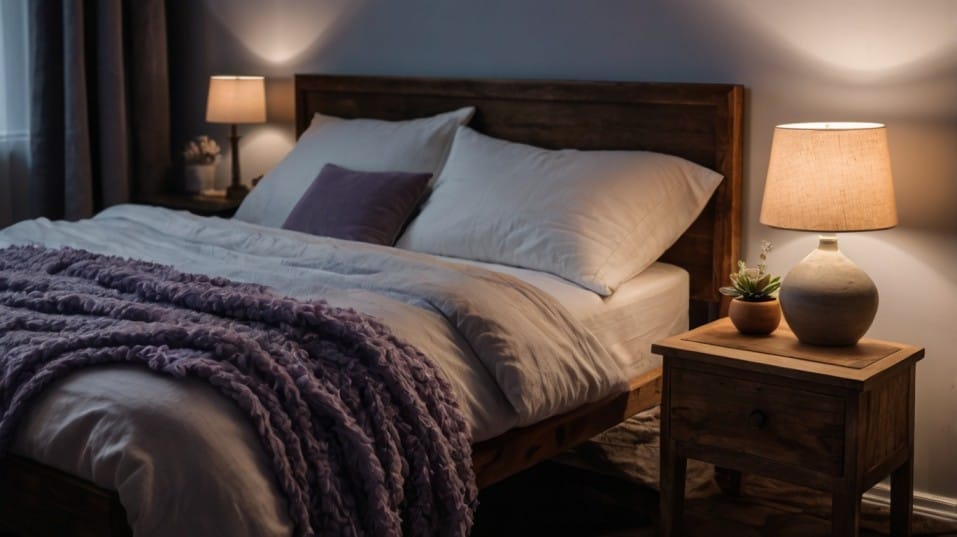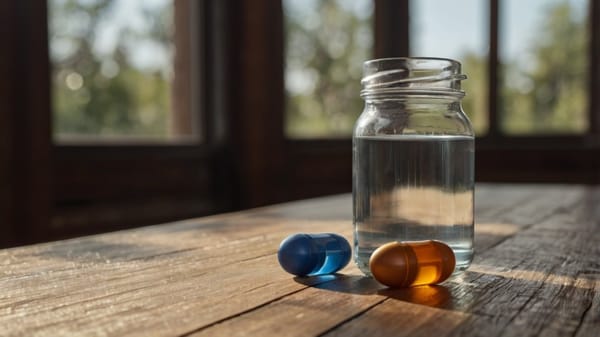The Beginner’s Sleep Stack That Doesn’t Leave You Groggy
Still waking up groggy even after 8 hours? This beginner-friendly sleep stack helps you wake clear, calm, and rested—without the crash.

Why does sleep sometimes feel like it didn’t count? You hit the pillow on time, skipped screens, even logged seven hours—yet still wake up cloudy and slow.
The issue isn’t just falling asleep. It’s the kind of sleep you’re getting. Most over-the-counter fixes knock you out but leave your brain behind.
The right beginner sleep stack doesn’t sedate—it supports. You wake up feeling like you actually slept. Here’s how to build it.
Why You Still Feel Tired After “Sleeping”
Most people assume bad sleep means not enough sleep. But often, it’s not the quantity of sleep that’s the issue—it’s the quality.
Even if you’re in bed for 7–8 hours, poor transitions between light, deep, and REM sleep can leave you feeling half-charged.
Your body might physically rest, but your brain doesn’t fully cycle through the stages that matter for repair and memory consolidation.
This is especially common if:
- You’re stressed or mentally overloaded before bed
- You eat or drink too late in the evening
- You use melatonin or sedatives that force sleep but disrupt sleep architecture
That’s where a thoughtfully designed beginner stack shines—it promotes natural sleep without the crash.

What Makes a Sleep Stack “Beginner Friendly”?
Beginner-friendly means a few things:
- No hard sedatives
- No grogginess or withdrawal the next day
- No complicated routines or expensive gimmicks
You’re not trying to biohack your way into oblivion. You just want to fall asleep faster, stay asleep longer, and wake up feeling like yourself again.
The key? Supporting the natural sleep process instead of overriding it. This stack is gentle but effective. It’s not about knockout doses—it’s about synergy, timing, and consistency.
Step 1: Magnesium – The Foundation for Physical Relaxation
Magnesium is the base of almost every great sleep routine. It plays a critical role in calming the nervous system, relaxing muscles, and regulating melatonin production.
But form matters.
Use this:
- Magnesium Glycinate – great for calming the body and reducing tension
- Magnesium L-Threonate – better for cognitive restoration and brain health
Skip this:
- Magnesium Oxide – poorly absorbed and often causes digestive discomfort
Start with 200–400 mg about 60–90 minutes before bed. You may notice less physical tension, fewer wake-ups, and a smoother transition into deep sleep.
Step 2: L-Theanine – For Mental Calm Without Drowsiness
Next, layer in L-Theanine, the amino acid found in green tea that promotes calm, focus, and a subtle drop in mental noise. Unlike sedatives, it doesn’t make you drowsy—it simply helps your brain shift gears.
Perfect for those nights when your body’s tired but your brain won’t quit.
Take 100–200 mg about 30–60 minutes before bed. It pairs seamlessly with magnesium and supports alpha brainwave activity—the relaxed state your mind enters right before sleep.
Bonus: L-Theanine can also help reduce early morning anxiety spikes, making it easier to stay asleep.
Step 3: Microdose Melatonin (If You Need It)
Melatonin can be helpful—but only if you use the right amount.
The problem? Most over-the-counter sleep supplements contain way too much—usually 3–10 mg per dose. That might knock you out, but it often disrupts your sleep architecture and leaves you groggy the next morning.
Instead, start with 0.3 to 0.5 mg, no more. This mimics what your body would naturally produce as it gets dark. It's especially useful if your sleep schedule is out of sync—after travel, late nights, or shifting work hours.
But don’t rely on melatonin long-term. Let magnesium and L-Theanine carry the routine. Melatonin is just the spark—not the fire.
Stack Timing: How to Layer It In
Sleep isn’t an “on/off” switch. It’s a gradual process. This stack works best when you stagger each part to match your body’s wind-down rhythm.
Here’s a sample timing:
- 2 hours before bed: Dim lights, lower screen time, start relaxing
- 90 minutes before bed: Take magnesium
- 45–60 minutes before bed: Take L-Theanine
- 20–30 minutes before lights out: (Optional) Microdose melatonin
Combine this with a few calming habits—reading, journaling, stretching—and your body will start to associate that rhythm with rest. That’s how you train your nervous system to shift into sleep mode, naturally.
Supporting Habits That Amplify the Stack
You don’t need a perfect bedtime routine. But the stack works best when paired with small, consistent habits that create the right internal signal for sleep.
Try these:
- Cut caffeine after 2pm
- Use warm light or amber glasses after sunset
- Avoid heavy meals within 2 hours of bed
- Stay off social media late at night—too stimulating
- Cool down your room (65–68°F is ideal)
You’re not trying to be perfect—just supportive. The less your body has to fight its environment, the more it can focus on rest and recovery.
What You’ll Notice After a Few Nights
This stack doesn’t just help you fall asleep—it improves how you sleep.
Here’s what users often report:
- Falling asleep faster, without the mental wrestling
- Staying asleep longer without waking at 3am
- Waking up with more clarity, less fog
- Less tension in the body, especially in the neck, jaw, or shoulders
- A calm but alert state in the morning, without needing coffee right away
And best of all? You still feel like yourself. Just more balanced.
Final Thoughts
You don’t need to overhaul your life or rely on heavy sleep aids to wake up feeling restored. A smart, simple sleep stack—built around magnesium, L-theanine, and (optional) low-dose melatonin—can shift your nights from restless to restful.
It’s beginner-friendly. It’s effective. And it actually works with your body.
Start tonight: Pick one supplement. Try it consistently. Build from there. Better sleep isn’t some mystery—it’s a process, and this stack makes it easier to trust your body again.




